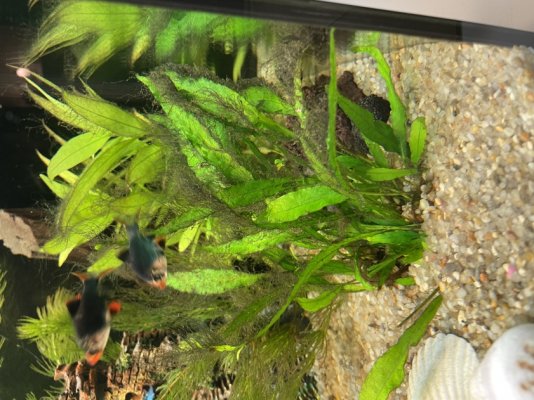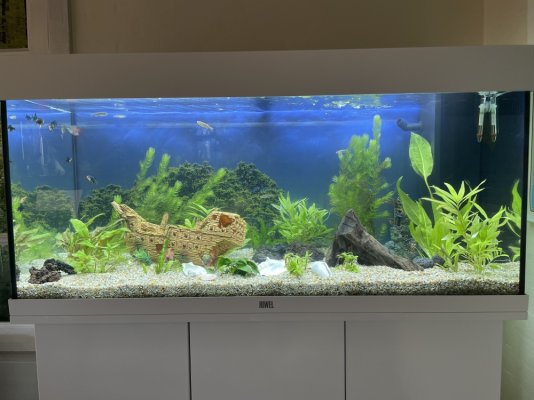Hello - my first post here.
I have not been able to find an answer to my question - so here goes:
We have re-setup our ols 120liter aquarium for about 7 weeks ago.
All values are fine and we seem to be up and running.
The problem:
From start there was some hairy-alges on the edges of the leaves of most plants. As far as my knowledge go, that is caused by not enough nutrients for the plants and they therefore draw the nutrients at hand to the new leaves.
We have fair growth in our plants and we fertilize with and all-in-one quality fertilizer.
The algea-hair does not seem to go away.
Will it go away or do we have to manually remove all leaves affected?
For now we have removed the worst examples, but left the rest.
But it seems that the algea-hair "spread" / contaminate the other leaves and plants and spread out that way.
So: Should we go for at drastic cut-down of most plants to get the hair-algea away or maybe just let time do its job.
Example plant attached (if I succeeded? )
Thanks and greatings from Denmark
JCN
I have not been able to find an answer to my question - so here goes:
We have re-setup our ols 120liter aquarium for about 7 weeks ago.
All values are fine and we seem to be up and running.
The problem:
From start there was some hairy-alges on the edges of the leaves of most plants. As far as my knowledge go, that is caused by not enough nutrients for the plants and they therefore draw the nutrients at hand to the new leaves.
We have fair growth in our plants and we fertilize with and all-in-one quality fertilizer.
The algea-hair does not seem to go away.
Will it go away or do we have to manually remove all leaves affected?
For now we have removed the worst examples, but left the rest.
But it seems that the algea-hair "spread" / contaminate the other leaves and plants and spread out that way.
So: Should we go for at drastic cut-down of most plants to get the hair-algea away or maybe just let time do its job.
Example plant attached (if I succeeded? )
Thanks and greatings from Denmark
JCN


